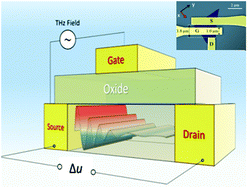Our official English website, www.x-mol.net, welcomes your
feedback! (Note: you will need to create a separate account there.)
Plasmonics with two-dimensional semiconductors: from basic research to technological applications
Nanoscale ( IF 5.8 ) Pub Date : 2018-05-02 00:00:00 , DOI: 10.1039/c8nr01395k Amit Agarwal 1, 2, 3, 4 , Miriam S. Vitiello 5, 6, 7 , Leonardo Viti 5, 6, 7 , Anna Cupolillo 1, 7, 8, 9 , Antonio Politano 7, 10, 11
Nanoscale ( IF 5.8 ) Pub Date : 2018-05-02 00:00:00 , DOI: 10.1039/c8nr01395k Amit Agarwal 1, 2, 3, 4 , Miriam S. Vitiello 5, 6, 7 , Leonardo Viti 5, 6, 7 , Anna Cupolillo 1, 7, 8, 9 , Antonio Politano 7, 10, 11
Affiliation

|
Herein, we explore the main features and the prospect of plasmonics with two-dimensional semiconductors. Plasmonic modes in each class of van der Waals semiconductors have their own peculiarities, along with potential technological capabilities. Plasmons of transition-metal dichalcogenides share features typical of graphene, due to their honeycomb structure, but with damping processes dominated by intraband rather than interband transitions, unlike graphene. Spin–orbit coupling strongly affects the plasmonic spectrum of buckled honeycomb lattices (silicene and germanene), while the anisotropic lattice of phosphorene determines different propagation of plasmons along the armchair and zigzag directions. Black phosphorus is also a suitable material for ultrafast plasmonics, for which the active plasmonic response can be initiated by photoexcitation with femtosecond pulses. We also review existing applications of plasmonics with two-dimensional materials in the fields of thermoplasmonics, biosensing, and plasma-wave Terahertz detection. Finally, we consider the capabilities of van der Waals heterostructures for innovative low-loss plasmonic devices.
中文翻译:

等离子与二维半导体:从基础研究到技术应用
在这里,我们探索二维半导体的等离激元学的主要特征和前景。每类范德华半导体中的等离激元模式都有其自身的特点,并具有潜在的技术能力。过渡金属二卤化物的等离子由于具有蜂窝结构,因此具有石墨烯的典型特征,但与石墨烯不同,其阻尼过程主要由带内而不是带间跃迁控制。自旋轨道耦合强烈影响弯曲的蜂窝状晶格(硅烯和锗烯)的等离激元光谱,而while的各向异性晶格决定了等离激元沿扶手椅和之字形方向的不同传播。黑磷也是超快等离子体的合适材料,通过飞秒脉冲的光激发可以启动主动等离激元响应。我们还回顾了二维材料在等离子技术,生物传感和等离子太赫兹检测领域中等离子技术的现有应用。最后,我们考虑了范德华异质结构对于创新型低损耗等离子体激元器件的功能。
更新日期:2018-05-02
中文翻译:

等离子与二维半导体:从基础研究到技术应用
在这里,我们探索二维半导体的等离激元学的主要特征和前景。每类范德华半导体中的等离激元模式都有其自身的特点,并具有潜在的技术能力。过渡金属二卤化物的等离子由于具有蜂窝结构,因此具有石墨烯的典型特征,但与石墨烯不同,其阻尼过程主要由带内而不是带间跃迁控制。自旋轨道耦合强烈影响弯曲的蜂窝状晶格(硅烯和锗烯)的等离激元光谱,而while的各向异性晶格决定了等离激元沿扶手椅和之字形方向的不同传播。黑磷也是超快等离子体的合适材料,通过飞秒脉冲的光激发可以启动主动等离激元响应。我们还回顾了二维材料在等离子技术,生物传感和等离子太赫兹检测领域中等离子技术的现有应用。最后,我们考虑了范德华异质结构对于创新型低损耗等离子体激元器件的功能。











































 京公网安备 11010802027423号
京公网安备 11010802027423号